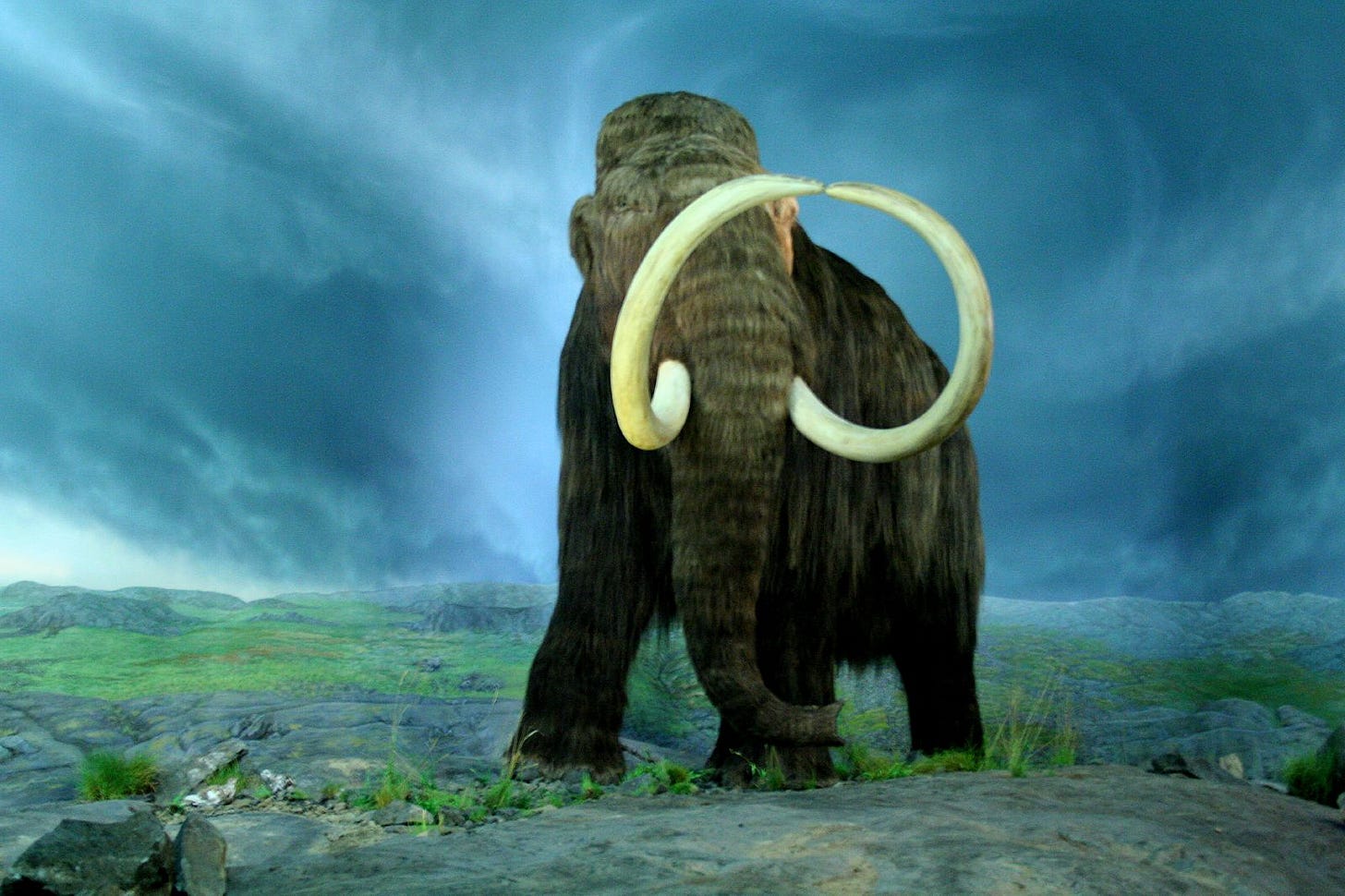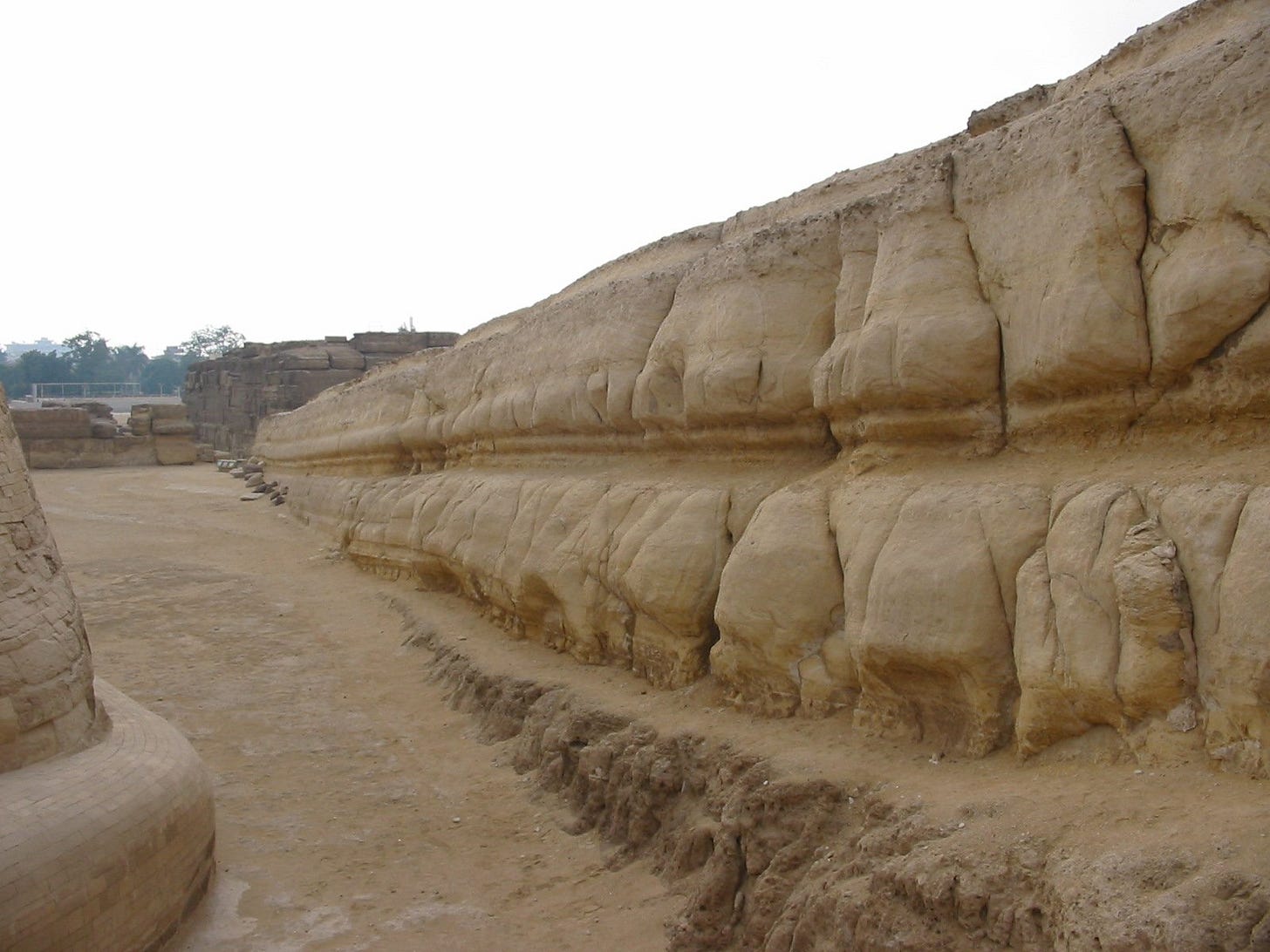When Was the Ice Age?
The determination of when the Ice Age happened has a big impact on our view of human history. Was the Ice Age entirely prehistoric, as Homo erectus lived in caves and clubbed animals, as most academics believe? Or was the Ice Age the time of advanced civilizations of the Early Bronze Age recorded in human history?
There are three main positions on when the Ice Age occurred. Evolutionists claim there were multiple Ice Ages during the Pleistocene Epoch, which lasted from 2.5 million years ago until about 10,000 BC. They claim the “Neolithic Revolution” when mankind learned how to farm began around 10,000 BC at the very end of the Ice Age.
Creationists have largely accepted the work of Michael Oard, who makes a strong case that the Ice Age lasted about 600 years, give or take two centuries, beginning shortly after Noah’s Flood. The warm ocean waters, heated by the massive tectonic movements of the Flood, evaporated an enormous quantity of water, causing the heavy precipitation of the Ice Age.
The question of when Noah’s Flood occurred produces the final two positions. Followers of the Septuagint (LXX) chronology of the Bible place the Flood about 3200 BC, and therefore place the Ice Age from 3200 to 2600 BC, give or take a century. Several proponents of the Septuagint chronology insist that the Ice Age had already ended before the Tower of Babel was built.
Ussher’s chronology of the Latin Vulgate and Masoretic Text (MT) of the Bible places the Flood in 2348 BC. This requires that the Ice Age lasted down to around the time of the Exodus in 1491 BC. The logical conclusion of the Ussherian position is that the Tower of Babel, Abraham, the Hebrew Patriarchs, and the Sojourn in Egypt all occurred during the Ice Age. And indeed, when we look for evidence of this in history, there is plenty to be found.
Evidence of the Historical Ice Age
Archaeologists divide history into three major ages: the Stone Age, the Bronze Age, and the Iron Age, each of which is further subdivided into three smaller ages. One problem with the three-age theory is that the Stone Age appears to have been contemporary with the Early Bronze Age. Nations at the far reaches of the world used stone technology largely because the cultures at the center were trading for all of the metals they could get to make bronze.
There are at least six lines of evidence that the Ice Age corresponded to the Early Bronze Age in human history, which also overlapped with the Stone Age. At the peak of the Ice Age, so much water was locked up in the North American, European, and Himalayan ice sheets that the global sea level was somewhere between 300 and 1,000 feet lower than today. Asia and North America were connected by the Bering Land Bridge. When the Ice Age ended, the meltwater raised the sea level back to its current height. There are historical records from three different cultures on different sides of the planet that the sea suddenly and catastrophically rose in 1451 BC, around the time of Joshua’s Conquest.
Let’s look at these five lines of evidence, saving the rise of the sea level for last.
1. Erosion of the Pyramids on the Giza Plateau
The Old Kingdom of Egypt is dated to the Early Bronze Age. It was the Fourth Dynasty of the Old Kingdom that built the Sphinx and the pyramids of the Giza Plateau, including the Great Pyramid, between 1921 and 1769 BC. The Sphinx and the outer casing stones of the Great Pyramid were made of the local Tura Limestone. That type of stone is beautifully white in color, but it is quite soft and water-soluble.
The Sphinx and the casing stones of the Great Pyramid and Pyramid of Khafre were heavily eroded by water. During the Ice Age, worldwide precipitation was much heavier, and the Sahara Desert was a lush forest and grassland with many lakes and rivers. By the reign of Amenemhat I of the 12th Dynasty around 1738 BC, the Sahara began to dry out. The heavy erosion on the Sphinx and the Pyramids indicates that they were built during the earliest and wettest part of the Ice Age. By the time of the 12th Dynasty, the Ice Age was coming to a close, and Egypt no longer received heavy rainfall.
2. Mentions of ice and snow in the book of Job
The Book of Job in the Bible mentions cold, ice, and snow seven times, which is more than twice the “density” of cold references than any other book of the Bible. Job’s lifespan (210 - 240 years) as well as references to early patriarchs named in Genesis suggest that Job was a contemporary of Abraham’s father, Terah, and probably lived from about 2141 to 1921 BC, when all of the Genesis 10 patriarchs were still living. The frequent mentions of cold, ice, and snow in the book of Job align with the early Ice Age in the CFAH model, when precipitation was at its highest.
3. Ice Age Microlith Arrows Gifted to Senusret I
In Egypt, a set of bird hunting arrows with microlith blades was found among the belongings of Senusret I of the 12th Dynasty, who reigned from 1718 to about 1683 BC. Identical bird hunting arrows with microlith blades are known from Ice Age Denmark. Either Senusret was an archaeologist, or more likely, he received the gift from a European tribe because he lived in the last third of the Ice Age.
4. Lake Moeris Dates to the Ice Age
The Patriarch Joseph is credited by Arab historians as having linked the Nile River to the Fayum Depression, a dry desert depression, forming Lake Moeris, by creating the canal named after him, Bahr Yusef.
Geologists who took core samples on the Fayum Depression concluded that it had only been completely filled with water during the Pliestocene Era, which was the Ice Age. The Chronological Framework of Ancient History (CFAH) model says that it is because Joseph lived during the final third of the Ice Age.
5. Ovid’s description of the Fire of Phaeton
Geologists tell us that during the Ice Age, the Mediterranean Sea was separated from the Atlantic by the then Isthmus of Gibraltar, meaning it was a closed body of water. The desert climate of the Mediterranean causes its evaporation rate to be far higher than the inflow of water from the Nile, Danube, Rhone, and Dneiper rivers, which are the only significant tributaries. If a dam were built at Gibraltar today, the Mediterranean Sea would go nearly completely dry in only 1,000 years.
The Geologists say that during the “Messinian Salinity Crisis” of the Ice Age that the water level of the Mediterranean dropped to 5,000 feet below sea level in the Easternmost part, dividing that body of water into two smaller seas separated by Sicily and Italy.
The Roman poet, Ovid, described this in his second book, which tells the tale of the Fire of Phaeton when Phaeton borrowed the chariot of the Sun from his father and drove it too close to the Earth. While elements of the story may refer to Joshua’s long day, the chronology of Phaeton is firmly placed around 1520 BC, just before the Flood of Deucalion, when melting of the European ice sheet caused the Black Sea to overtop its rim and burst through to flood the Adriatic Region.
Describing the dried-up Mediterranean, Ovid says:
The Ocean too, is contracted, and that which lately was sea, is a surface of parched sand; and the mountains which the deep sea had covered, start up and increase the number of the scattered Cyclades.
— Ovid, Book II.276
6. The Sudden Rise of Sea Level in 1451 BC
Continuing the story of the Messinian Salinity Crisis from geology, we are told that at the end of the Ice Age, as the glaciers melted, the sea level of the world ocean rose until it overtopped Gibraltar, cutting a channel to refill the empty Mediterranean Sea. The resulting localized deluge is called “the Zanclean Flood” by Geologists, and it is credited with cutting both the Gibraltar channel and the deep channel between Tunisia and Sicily as it refilled the empty Mediterranean basin. Supposedly, the nearly dry Mediterranean basin was completely refilled in the space of only three weeks. The rising waters forced people to flee from their homes and cities, which were swallowed.
Four cultures recorded major catastrophes dated 1451 BC, which appear to be related to this event. The Greeks recall the Flood of Dardanus, where the Mediterranean Sea suddenly rose, drowning the lowland settlements around the Adriatic region, including the lower parts of the Island of Samothrace, where Dardanus lived. He and his family were forced to flee to high ground and then left the island on rafts to migrate to better land in Ionia. Cecrops is said to have founded Athens about a year after the same event, suggesting his people fled from the Western Adriatic up to the region where Athens is now situated on higher ground.
The Hindus record that year 1,653 of the Kali Yuga (era), the same year that Krishna died, that the Temple of Dwarka was swallowed by the rising sea. As the Kali Yuga began in 3104 BC, this places the sinking of Dwarka circa 1451 BC. They also record the story of a long day when the sun refused to set in the same account. In the Ussherian chronology, Joshua’s long day occured in either 1451 or 1450 BC, thus agreeing to the year with the Hindu reckoning.
In Sri Lanka, the natives record that the Tamil School was claimed by the sea around the year 1500 BC. If the sea level was steadily rising from the time of the Fire of Phaeton in 1520 to the overtopping of Gibraltar in 1450 BC, then the Tamil School was probably located at a lower elevation than Dwarka, hence it was taken by the sea a few decades earlier.
The Greeks remember the Zanclean Flood as the time that Heracles cut open Gibraltar to allow the Atlantic to flow through. For this reason, they referred to Gibraltar as the "Pillars of Heracles” and depicted Heracles opening the channel in some of their artwork.
Conclusion
The evidence that the Ice Age ended at the time of Joshua’s Conquest, with the rapid rise of sea level, is fairly strong because the sudden rise of sea level was recorded by three civilizations on different sides of the planet. The Ocean's sea level could only have overtopped Gibraltar to cause a massive flood once in history.
These observations merely scratch the surface of the subject of the timing of the Ice Age. For further reading, I recommend the book Ice Age Civilizations by James Nienhuis.





